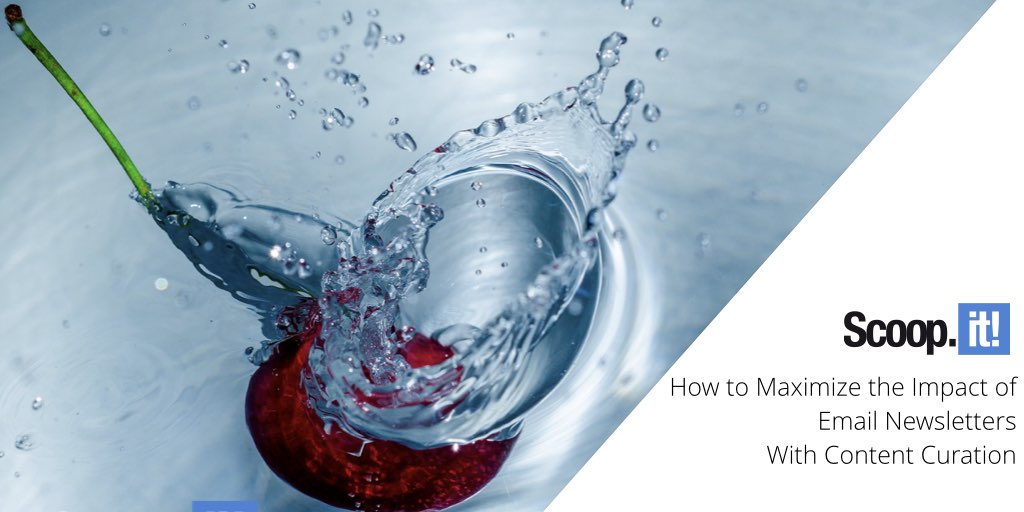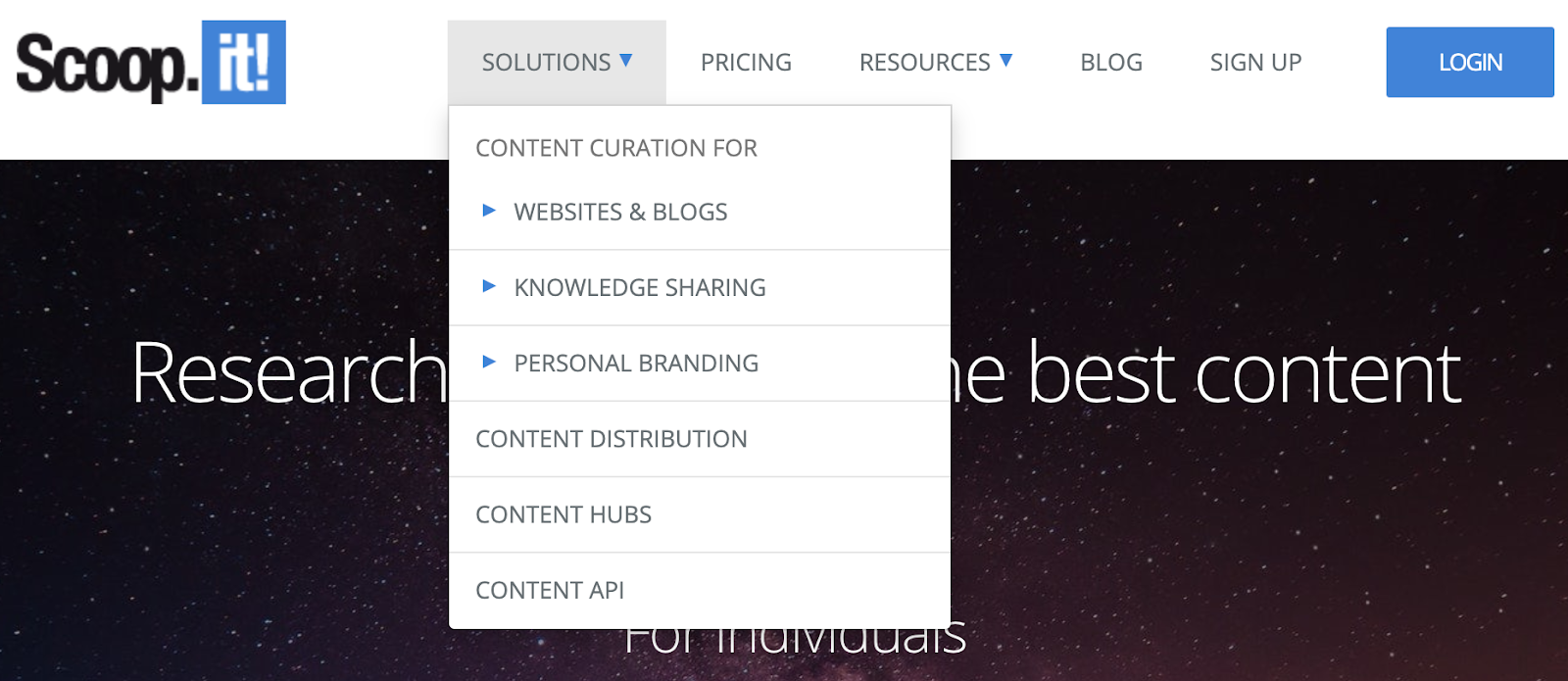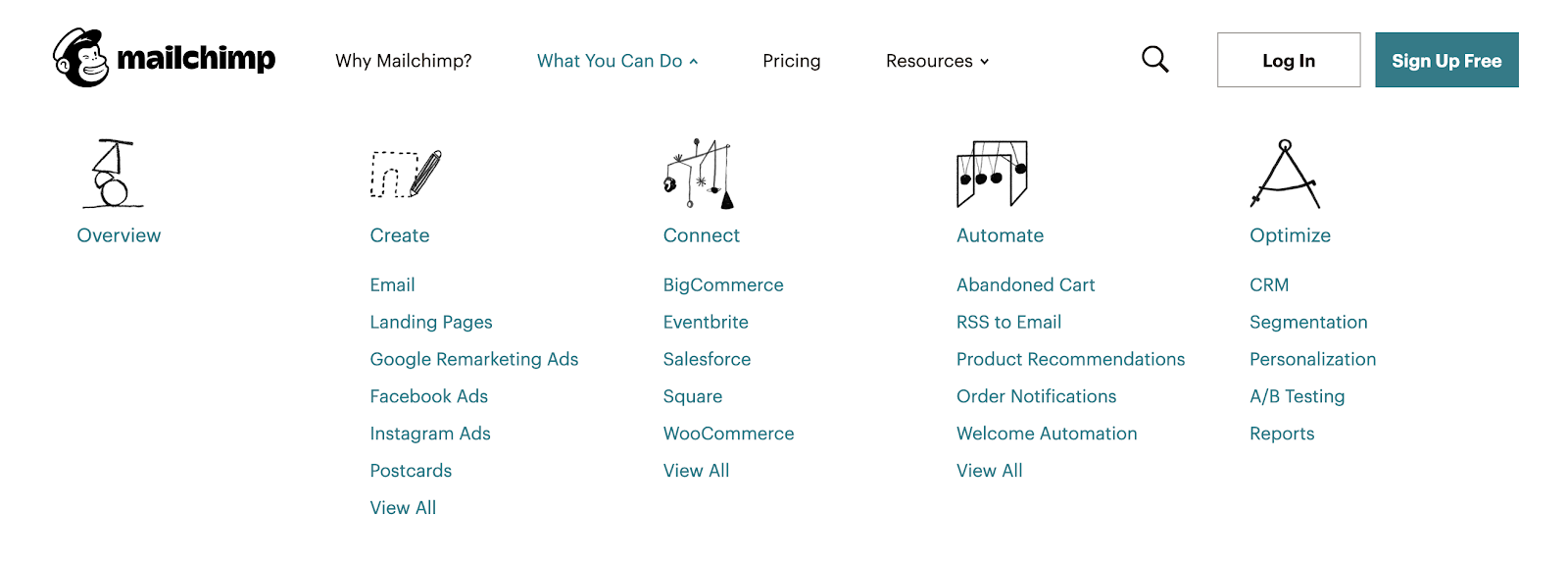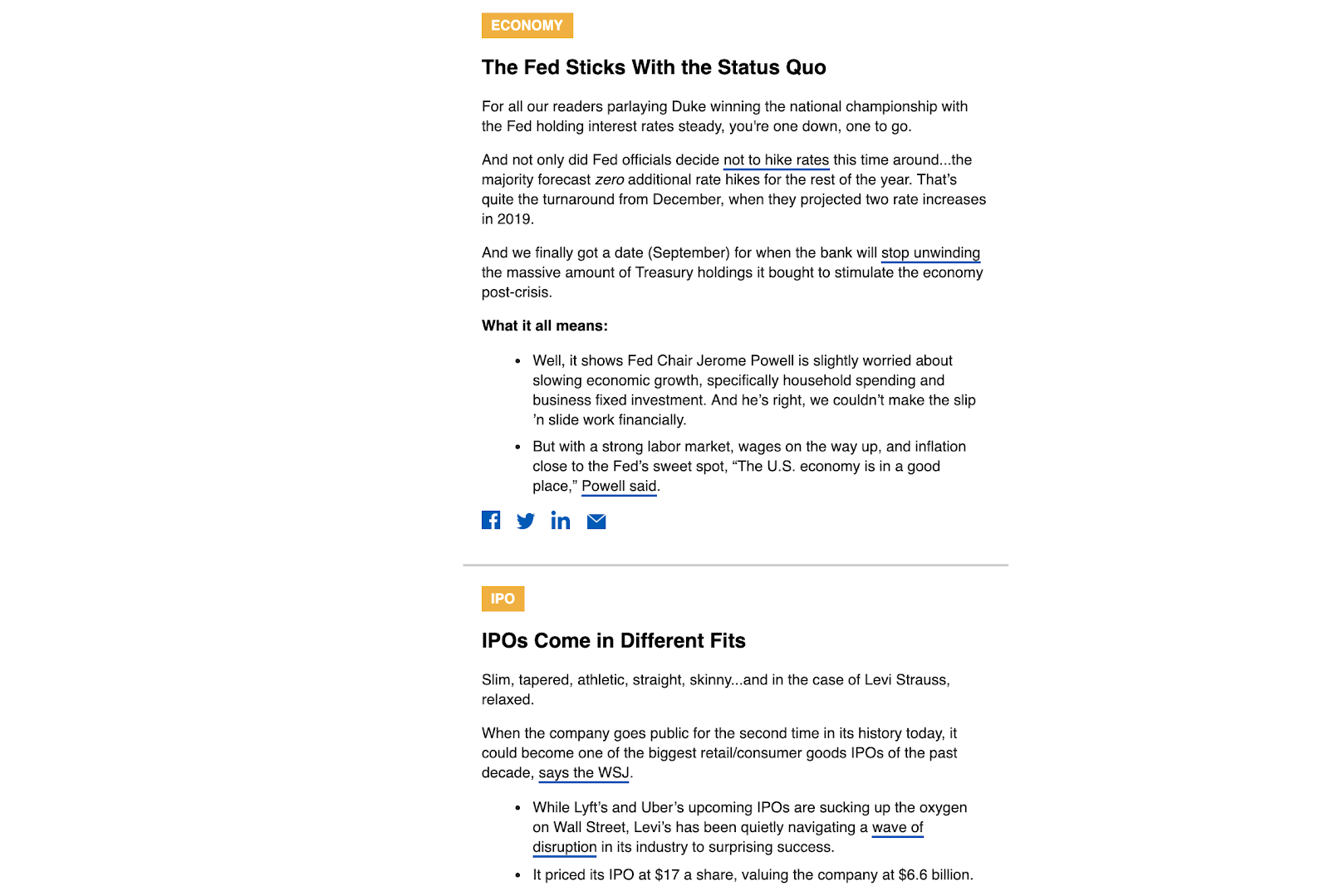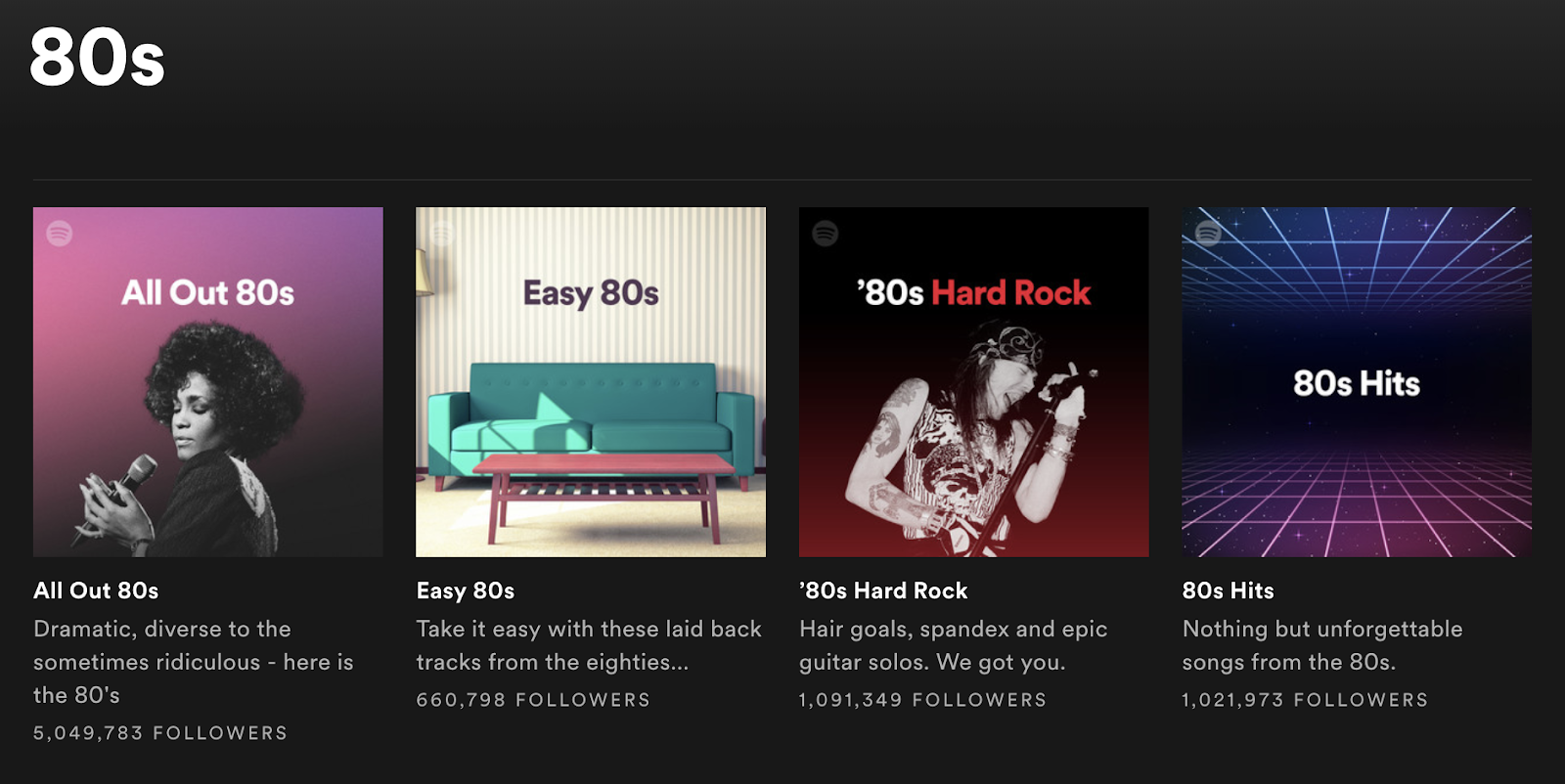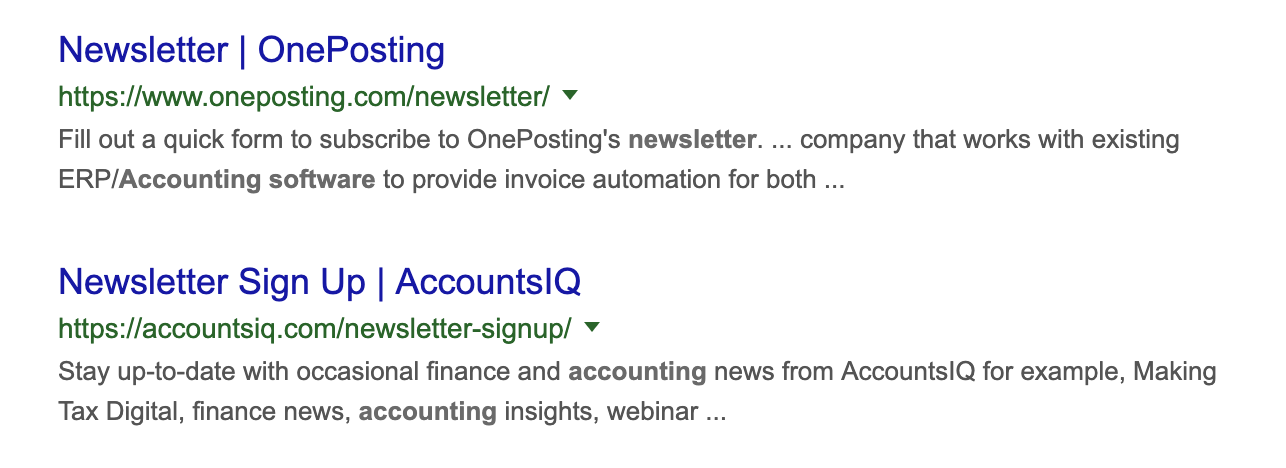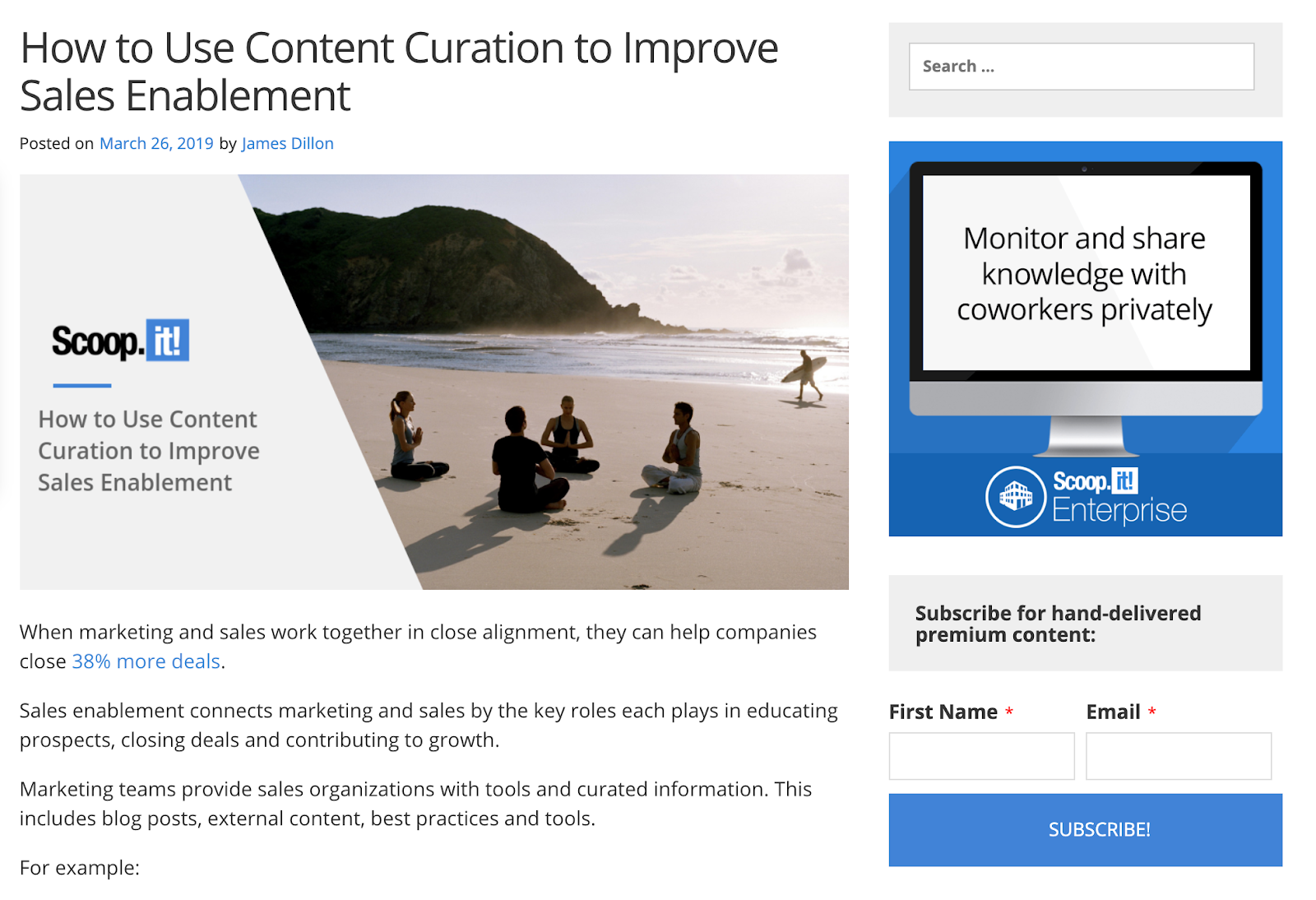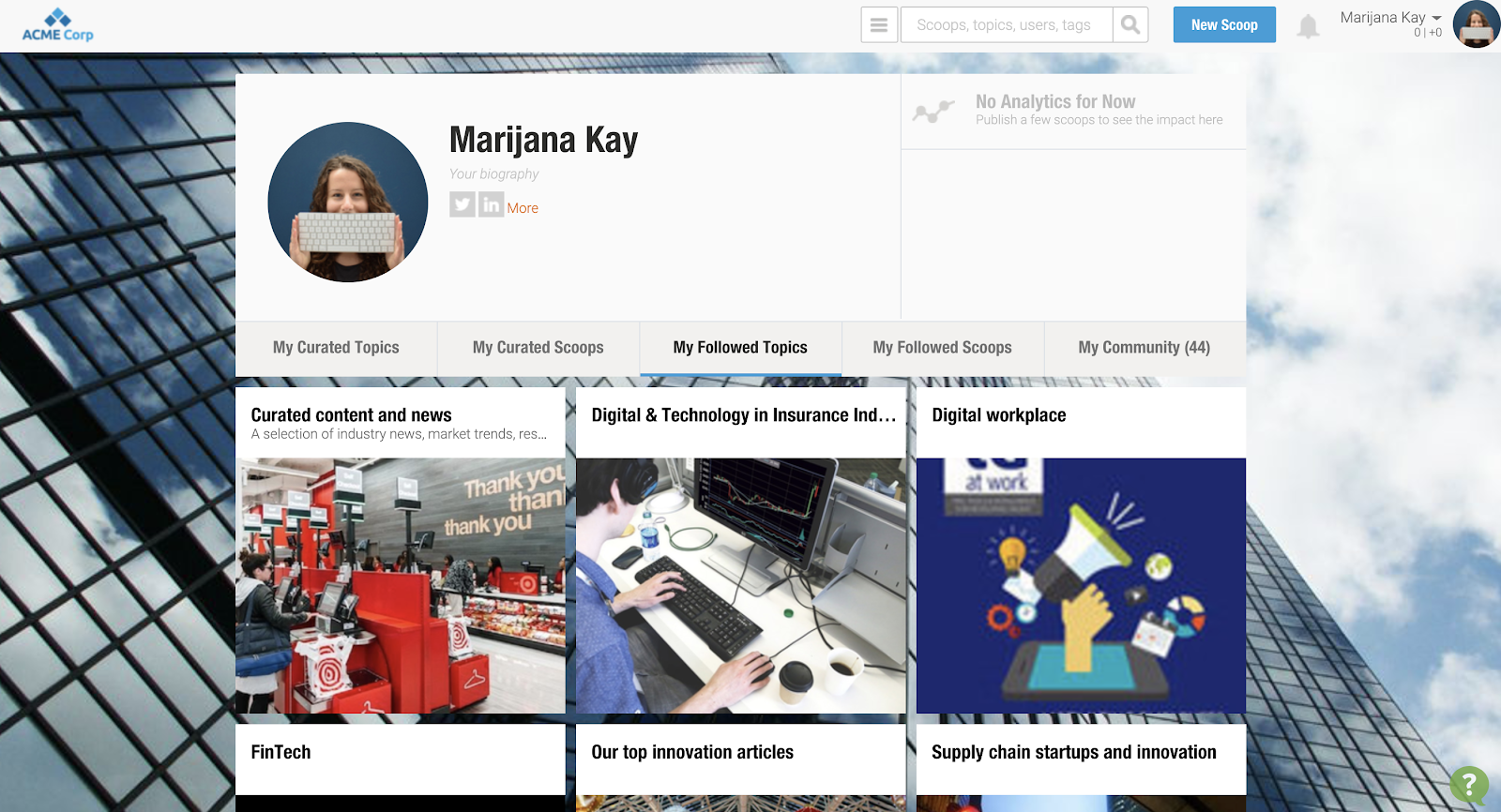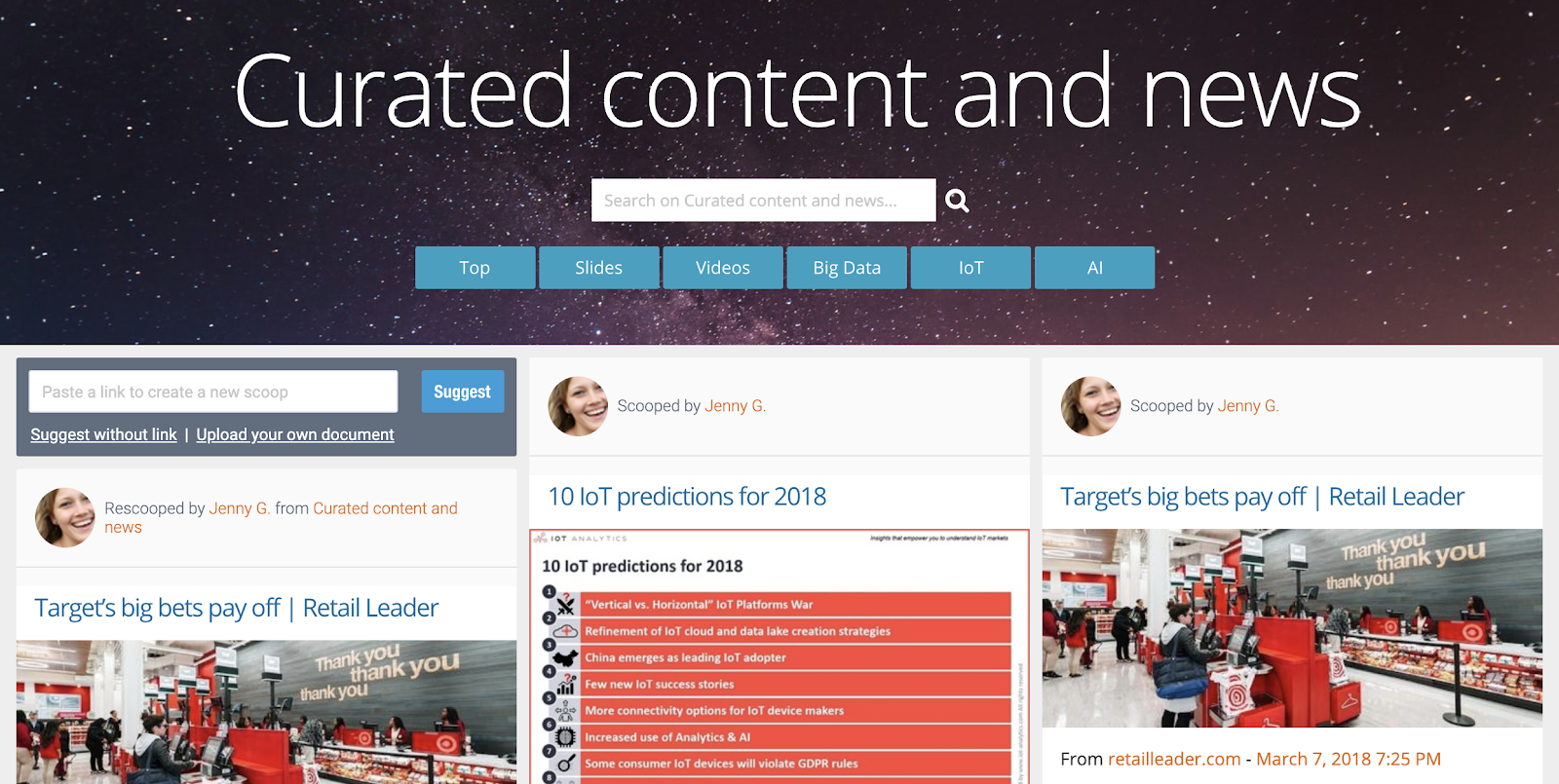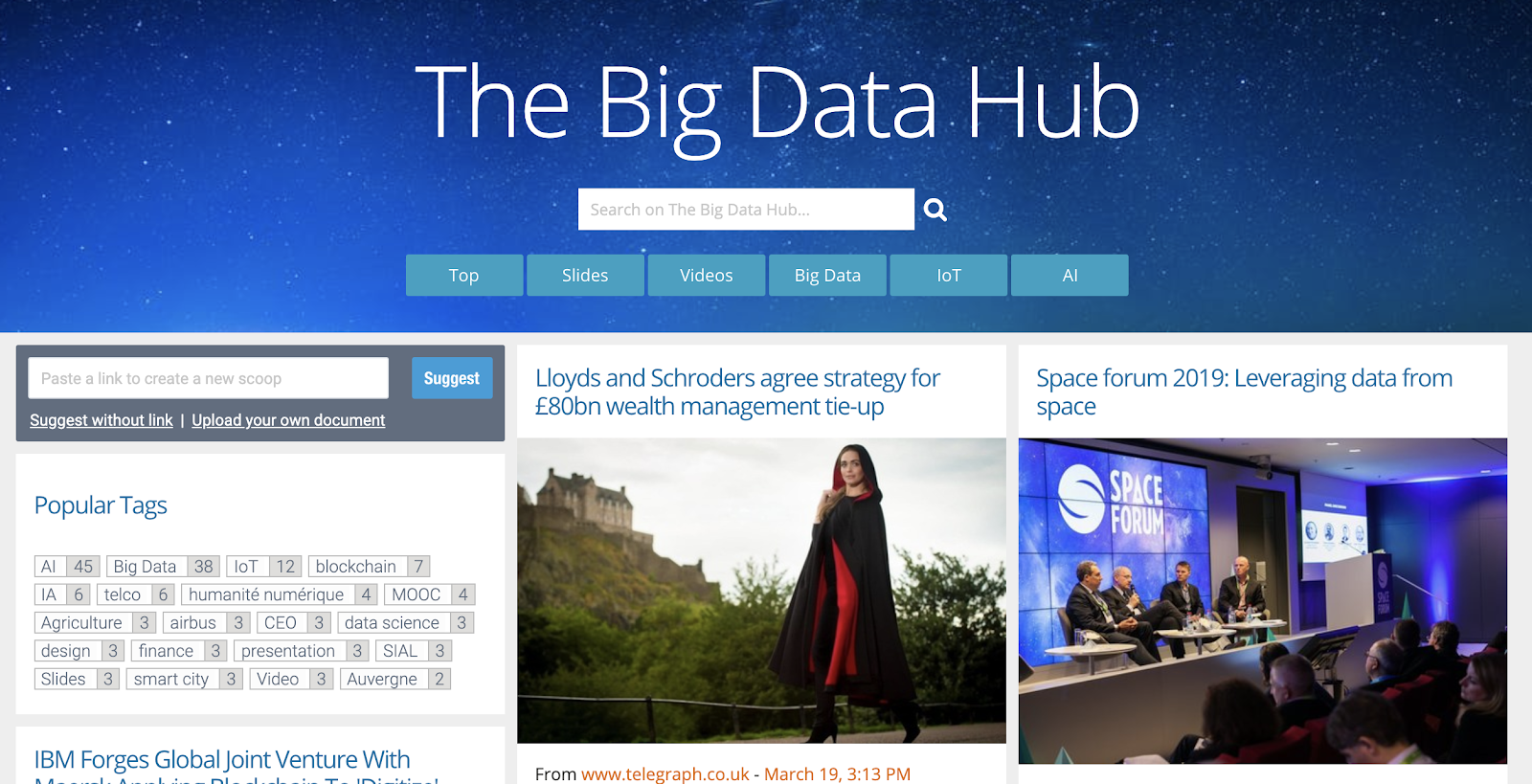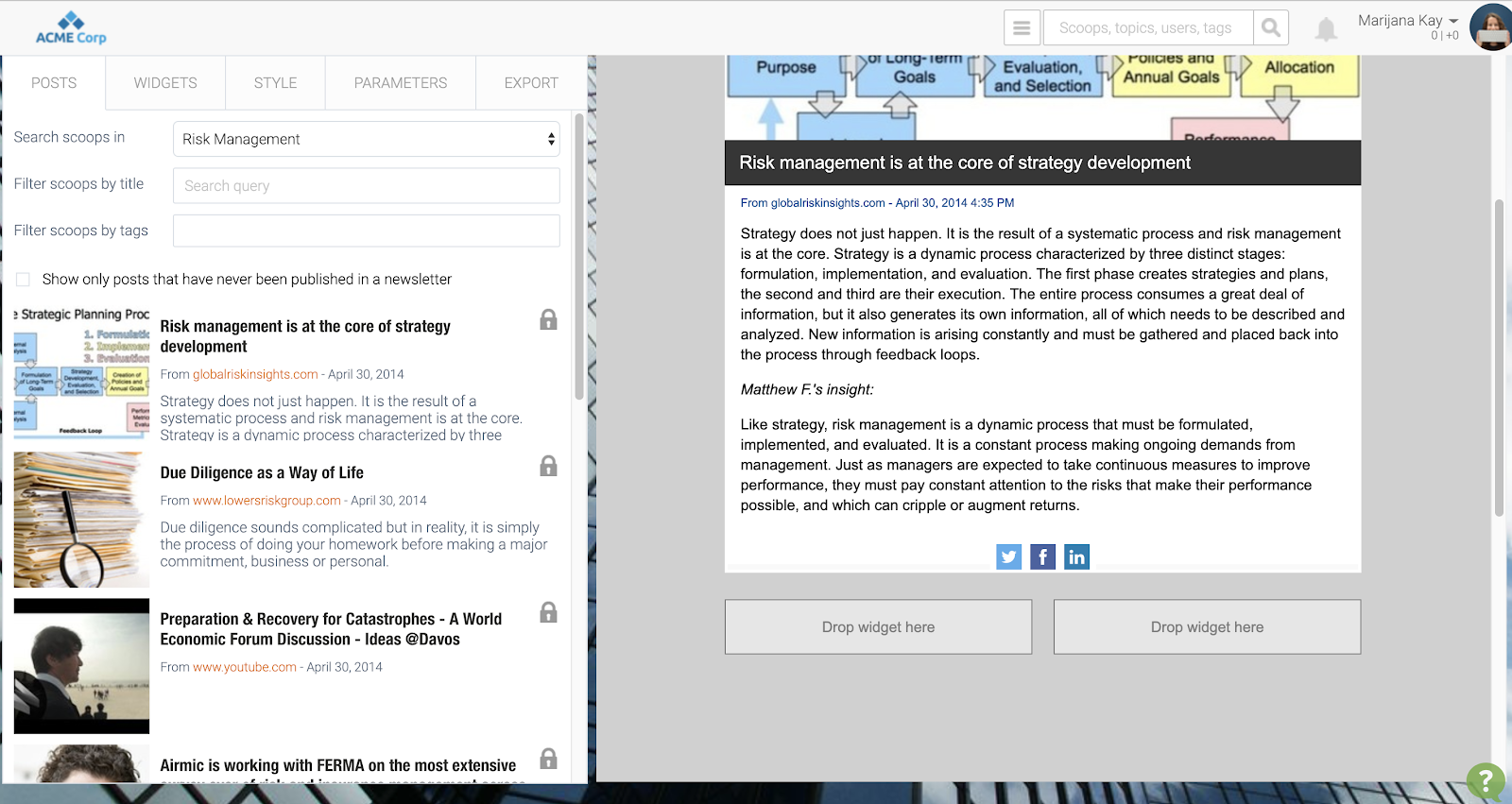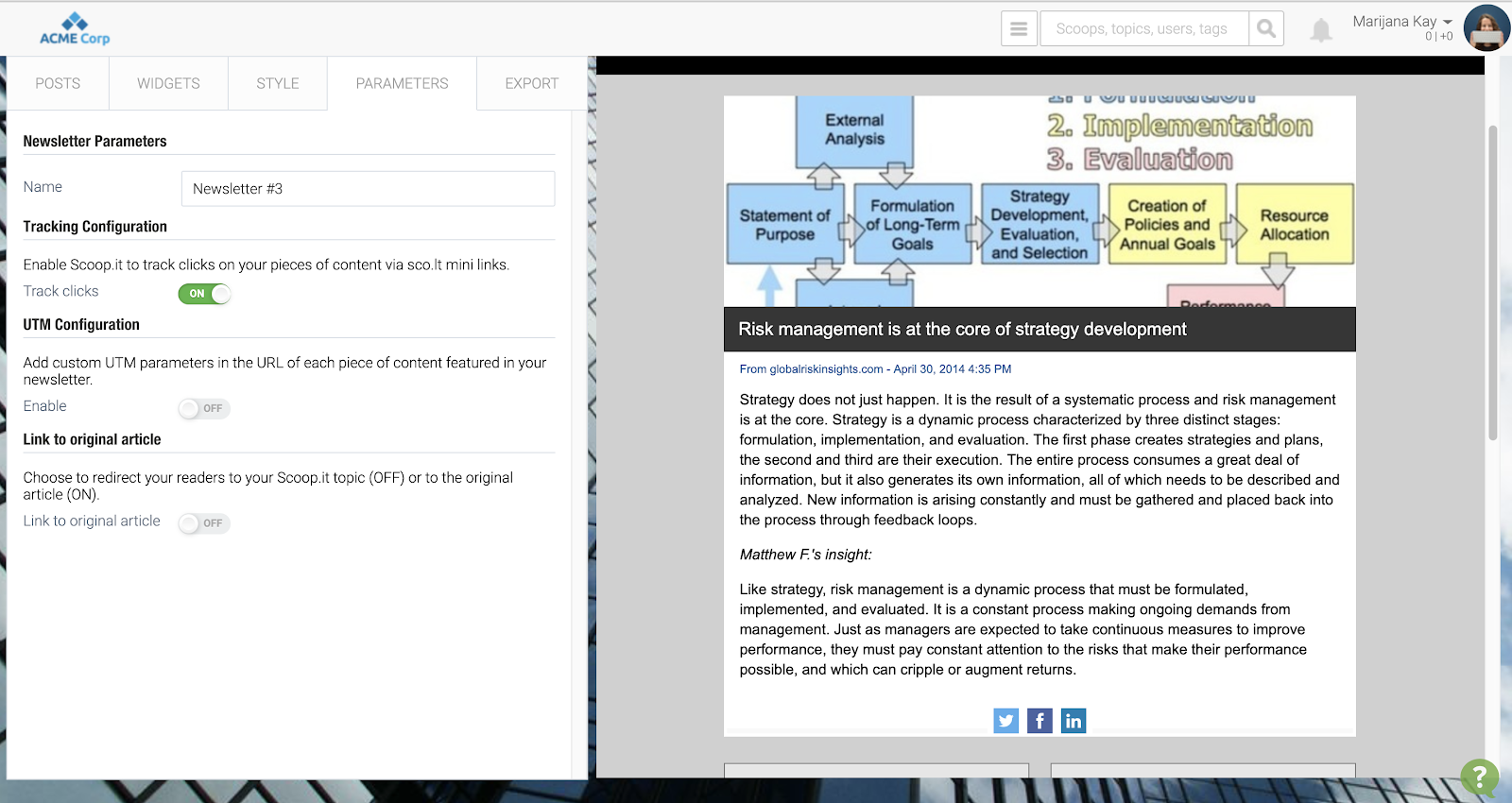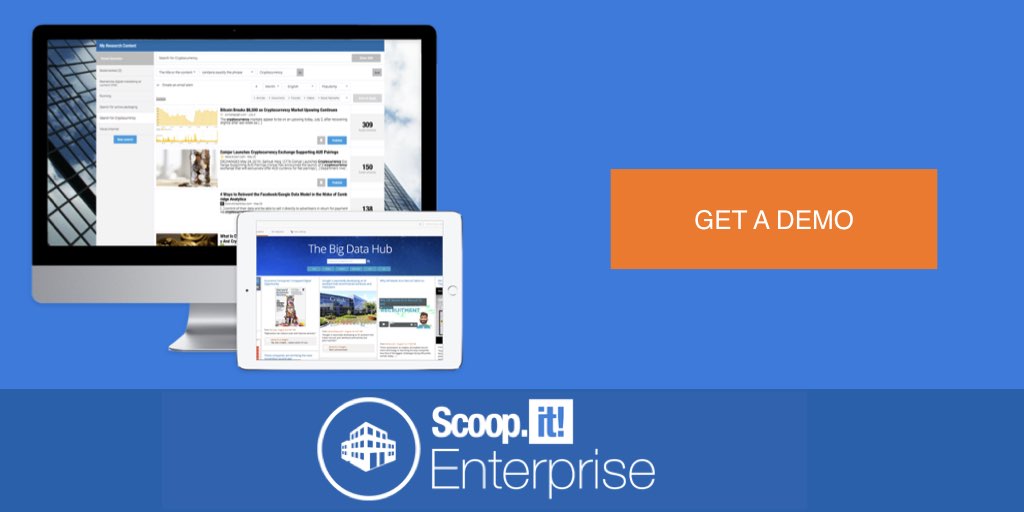One of the best ways to build trust with your audience is by opening a two-way communication channel.
Social media has provided this for a long time now. Everyone can now tweet, message, and tag brands through channels they hang out on.
When you’re on the business side of this interaction, there’s a problem (and it’s not quite obvious): these platforms dictate the rules of your engagement with the users.
Algorithms change and your reach drops, as it happened for many companies when Facebook introduced the algorithmic feed. In fact, this change was so severe that for many Facebook Pages, their post reach dropped to only about 2% of their audience.
Let’s not forget that some platforms simply stop existing, like Google+ did in April 2019.
In other words, you can’t afford to be at the mercy of these platforms. Building your own audience on your own terms is the only way you get full control over the reach. It allows you to confidently test the engagement with your content.
The solution: curating a unique, engaging email newsletter that will position you as the go-to resource in your industry.
The key word here is curating, rather than creating from scratch. This guide will show you the benefits and practical tips to maximize the impact of your newsletters with content curation.
Why you should focus on newsletters
Email newsletters are often seen as an outdated marketing strategy, but that couldn’t be further from the truth.
It’s the opposite. Some estimates claim Americans are exposed to around 4,000 to 10,000 advertisements each day. For most of us, it’s safe to say our brains are over-stimulated. It’s often hard to connect with others and build attachment and trust, and this is exactly where email newsletters can help you make an impact.
Why? Because we all crave connection. We don’t care about a corporation, but when we establish a one-to-one communication with them and talk to a real person (rather than a brand name), we enjoy it.
In fact, customers with a strong attachment to a particular company spend 23% more than average consumers, so building this connection through a newsletter can easily separate you from your competitors.
Unsure if email newsletter is the best path you can take in your business? Consider these advantages:
- You can demonstrate authority on subjects that matter to your audience
- Newsletters build readers’ habits and become something they expect and crave
- It’s a perfect way to nurture relationships and loyalty
- You can track clicks in your newsletter, segment your readers by interests, and deeply understand their preferences
Also, don’t forget that no matter how well you maintain your social media presence, there’s always a chance that some segments of your target audience isn’t on that platform.
However, they all have email accounts (there are about 2.7 billion social media users versus 3.9 billion email users worldwide). Once they find you, you don’t want to rely on whether they are on a social platform of your choice and have decided to follow you there.
Letting them subscribe to a mini-magazine from you directly to their inbox is a much better alternative.
Key elements of highly-engaging newsletters
You’re on board. You want to send consistent and engaging email newsletters. What are the key elements that will make it possible?
Relevance
First things first: your email newsletter has to be relevant to your industry, appeal to your audience’s interests, and share content about topics they care about.
Does this mean you have to do exactly what everyone else in your industry is doing? Absolutely not (we’ll touch more on that later). But a great rule of thumb is to start out with the main topic categories your customers and readers already like.
Good places to look first are:
- Categories on your blog
- Types of customers you’re targeting with your products
- Types of problems you solve
If we were starting a newsletter based on our products today, here’s where we’d look first:
And for a company like Mailchimp, this might be a good starting point:
Value
Once you’ve passed the relevance hurdle, the next step is creating actual value for your reader. Many company newsletters fall into the trap of talking about themselves.
The harsh reality is that your audience cares about the topic first, and (hopefully) about you second. Worldwide, household brands might be the rare exception to this.
If someone subscribes to your newsletter expecting value, but all they receive is your self-praise, they’ll be quick to unsubscribe.
So what does value look like?
Value of your email newsletter will come from uncovering valuable resources and/or teaching an important skill or methodology—for free. It’s something that makes your reader walk away feeling better, more capable, and with something new to share with their coworkers and peers. It’s what creates engagement.
If your newsletter can be shared on social media and through other channels, your subscribers can increase and amplify the impact of the emails you send.
Authenticity
The one-to-one element of email newsletter really comes to life when you talk about relevant topics from personal experience.
Drawing from your own stories, even if you’re sharing other people’s content, is instrumental to making your newsletter stand out. When you take readers through your challenges, breakthroughs, and experiences, they start seeing the people behind your brand.
They’re able to relate and remember your emails long after they’ve read them. They become your ambassadors.
Quick and easy consumption
Making your emails easy to skim and read on the go is imperative, no matter how interesting they are.
People are used to quickly check their email and simply don’t treat it the same way they do blog posts and other content. One research revealed an average person spends only around 20 seconds to read an email.
Your emails will perform the best if they emphasize key titles and links with subheaders, along with one or more short paragraphs about it.
Depending on the topic, long tangents can work really well, but start out with short and sweet email sections and test out longer ones later on, always keeping in mind the importance of formatting for easy scanning.
For example, the Morning Brew newsletter shares a lot of information in their daily email. Keep in mind it’s news about business and finance, so it would be easy to make the email cluttered and hard to read.
They’ve nailed the scannability of their emails with yellow signs for categories, short paragraphs, and bullet points:
The value of content curation in email newsletters
Content curation can make your brand credible and fuel your growth over a long period of time.
The great news about this? The exact same approach applies to email newsletters, too.
Curating an email newsletter is the act of finding, organizing, and sharing the best of the best resources in your industry and delivering it to your audience’s inboxes.
Because of the amount of content out there, your audience might be experiencing FOMO—the fear of missing out. They want to be great at their jobs, but their plates are already full. Keeping up with the industry news and developments is a challenge on its own.
That’s why you can stand out with a thoughtfully curated newsletter. It’s their guarantee they’re up to date and have all the information they could possibly need, enriched by your insights and personal experiences.
Curating a newsletter is like building a playlist and sharing it with others.
Imagine you’re hosting an 80s-themed party. How long would it take you to put together a 5-hour playlist for it?
Probably an hour or more.
How long would it take you to find a Spotify playlist that’s perfect for it?
About 5 seconds.
That’s the benefit of curated email newsletter for your audience. You save their time, deliver new perspectives, give them food for thought, and help them get smarter in a heartbeat.
What about benefits for you? We’ve mentioned some already, but here’s some more:
- Align your brand with experts: The more you show up for your audience next to the experts you’re featuring in your newsletter, the more natural that connection will be and the more they’ll trust you.
- You’ll never run out of ideas for new content: There’s probably no industry that isn’t seeing thousands of pieces of content on a daily basis. You’ll always have something to share!
- You’ll stay top-of-mind for your subscribers: You’ll never have to skip a week of sending your newsletter and reading it will become your subscribers’ habit.
- You won’t come across as too self-promotional and braggy: by acknowledging the work of others in your industry, you’ll become the connector and the go-to person of your industry without having to push your own products or messages all the time.
Curating a newsletter doesn’t have to be hard. You and your coworkers are already reading a ton of articles every week, so all you need is a simple way to collect the best ones and distribute from there.
Step by step: How to efficiently curate your newsletter
To curate an engaging email newsletter without wasting time, all you need is an easy-to-follow process. Follow these steps to conduct competitor research, collect the content you’ll share, and create a newsletter quickly and easily.
Step 1: Know what your competitors are doing
The first step is to look into other industry newsletter. This isn’t to steal ideas or copy others, but to see what’s already out there.
People don’t want to clog their inboxes with dozens of newsletters that all say the same—they’ll pick just one. Use insights from your competitors to see what they aren’t talking about, and carve out a curated newsletter niche for yourself.
Look for ways to add unique insights, share different formats, and add authenticity to your industry topics.
To do this, subscribe to the newsletters of your main competitors. If they don’t have it (or if you want all the insights you can get), search for other newsletters in your industry.
For example, if you sell accounting software, search for ‘accounting software newsletter’ and this is what you may find:
Step 2: Define your audience and topics
We’ve touched upon some topic selection methods in the Relevance section earlier, so let’s drill into topics and audiences more.
Your curated newsletter topic should be something so relevant and valuable it will stop your audience in their tracks. Ideally, it will be a crossover between:
- What matters to your audience: Why are they subscribing in the first place? What topics do you usually talk about, and how is this related? You want to provide the convenience of all the best pieces of content on the topic, so make sure they all align with pain points of your target audience.
- What matters to your business: What does your audience know you for? What are the services and products you offer and what gap in the market do you fill in? Your goal here is to keep your business top of mind and build brand awareness, so the topics must align with what you sell. Otherwise, the brand awareness won’t matter.
Choose a couple of topic categories where you believe you can make the most impact. You can build up later on from there.
Step 3: Promote your newsletter
Before you invest your time into topics and curating content for them, make sure your newsletter is actually findable.
First, ensure there’s a prominent place on your website, and especially high-frequency pages like your blog, that invites new subscribers. Here’s what this looks like on our blog, in the column on the right:
Another step here is to identify other channels your audience already hangs out and make sure you’re promoting your newsletter there.
This might be Twitter, Facebook, Reddit, industry forums, and more. As with any promotion, always make sure to showcase value behind what you’re promoting and a clear call-to-action.Of course, make sure you’re following promotion and participation rules if you’re promoting in forums, Facebook groups, and other regulated online communities.
Step 4: Gather content and send your first curated newsletter
Want to collect and distribute your curated content while spending as little time as possible? This is exactly what Scoop.it Enterprise makes possible.
The earlier mentioned topics and categories apply here perfectly because you can create and follow topics directly from your Scoop.it dashboard. Each topic is structured like a content hub.
It’s a collaborative space where you and your colleagues can contribute with the content you’re reading and sort it in the correct place right away.
You can have a single topic, such as the above ‘Curated content and news’, that you’ll always use to curate your newsletter and filter everything by tags (you can see tags below the search bar):
Alternatively, you can create a topic for each of the topic categories you’ve identified earlier and save your content there so you can pull from it based on the focus of each newsletter.
Of course, you can also further filter these topics with tags as well:
When you build up a library of content, it’s time to send your curated newsletter!
In Scoop.it Enterprise, this is easy to do directly from the Newsletter module. Once you open it, you can choose one of the templates we’ve created for you. Then, you can filter your curated content on the left by topic pages, title, and tags:
You can also hover above each of the articles you’ve dragged into your newsletter, click Edit, and change the title, image, and the description. This is where you can let your thoughts and expertise shine and contribute to your reader!
Finally, when you’re happy with your newsletter, you can click Export and take the HTML into your tool of choice, such as email marketing, CRM, or marketing automation tool.
It’s simple as that!
Step 5: Track engagement, analyze, rinse, repeat
To always keep improving your curated newsletter and increase engagement over time, tracking and measuring its performance is crucial.
In the Parameters tab of Scoop.it Enterprise Newsletter, you can enable Scoop.it to track clicks on your links with short links. You can also add UTM parameters to assign specific campaigns to the links you share.
As you publish more curated newsletters, you’ll see what formats, topics, length, and tone of voice work the best with your audience and tweak your strategy as you go.
What’s stopping you from curating engaging email newsletters?
If you’ve always felt like you don’t have enough time to curate great content from your industry, now you know your team and coworkers can help out.
If you were stuck on topics, we’ve given you a place to start and build from.
And if you never knew how to use tools to help you streamline the process, we’ve shown you exactly how curation in Scoop.it Enterprise can empower your strategy.
Want to try it out? Request a demo so we can show you how to create a curated newsletter your audience will be excited for!

